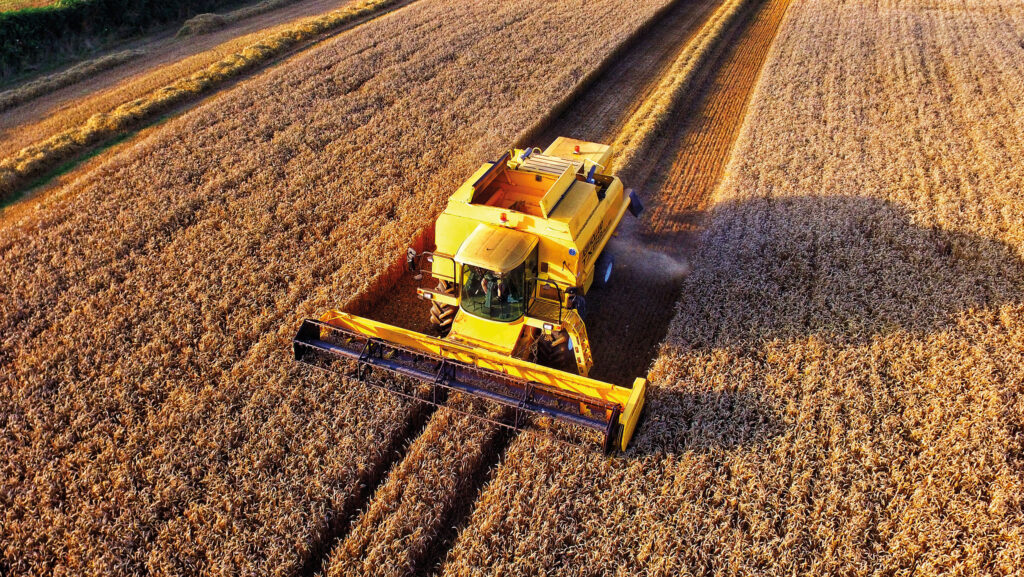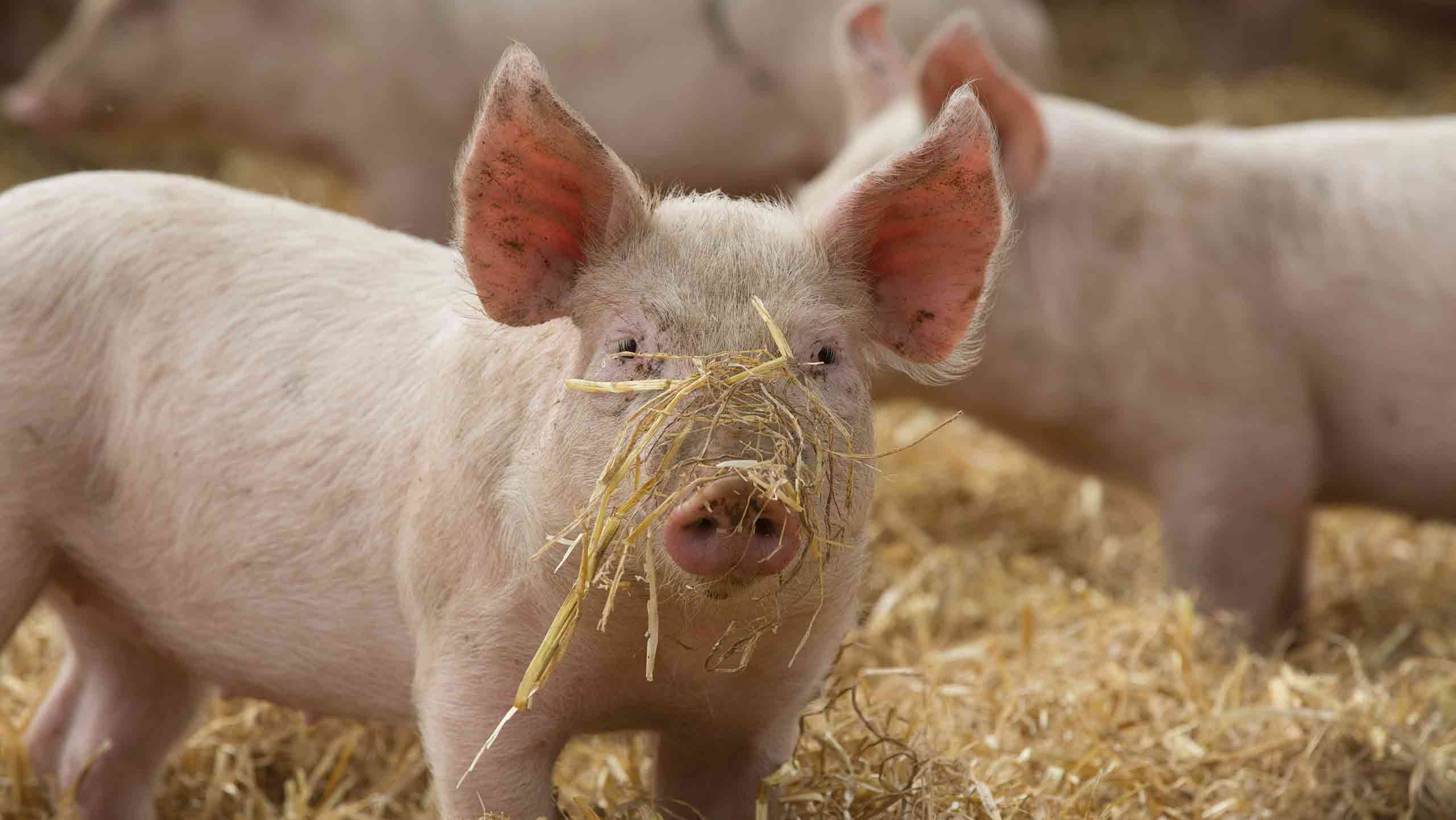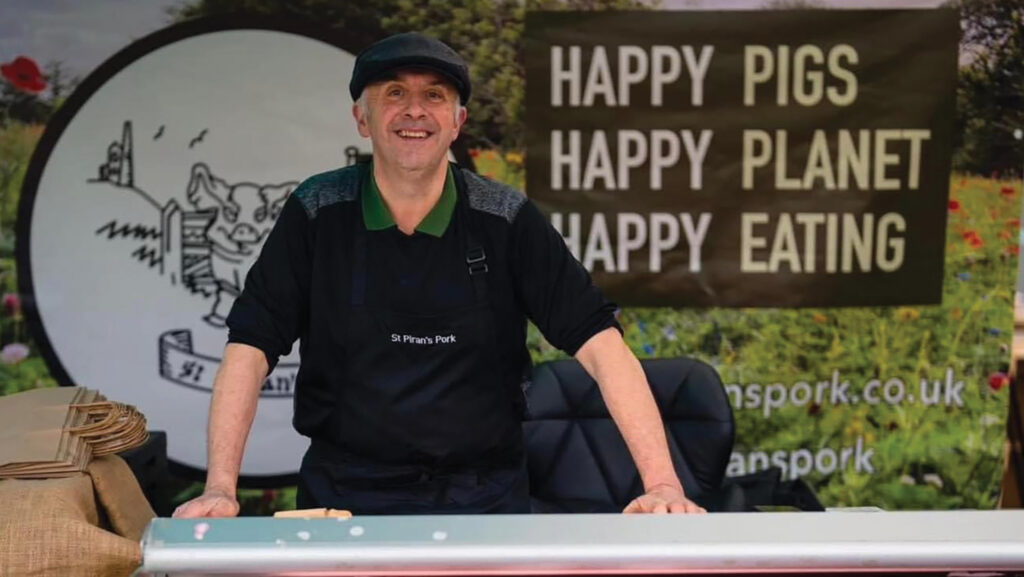Eliminating chemicals helps future-proof pig and arable farm
 © Pete Crawley
© Pete Crawley Nick Dymond’s journey to chemical-free crop production began 10 years ago when he decided to escape the chemical conveyor belt and focus on soil health at the family pig and arable farm.
Finding himself disillusioned with escalating agronomy bills, plateauing crop yields and plummeting pig margins, he knew the system of growing conventional crops for pig feed had to change.
What started with eliminating insecticides has evolved to successfully growing fungicide-free crops for the past six years.
See also: Why regenerative farming needs to start with the soil
This has since enabled Nick to future-proof a previously loss-making pig enterprise through the development of the farm’s own brand regenerative pork range, St Piran’s Pork.
Focused on cutting chemical use and producing nutrient-dense food at the 240ha farm near Truro, Nick has successfully eliminated artificial fertiliser and grown crops for the past two years without herbicides.
He now intends to address soil nutrition imbalances to create a fully functioning soil system.
Nutrition farming
Nick came across the idea of nutrition farming a decade ago after hearing a talk from Australian agronomist Graeme Sait.
This proved to be a defining moment in his farming career, prompting him to develop a farming system with nature and soils at its core.
“The underlying concept of nutrition farming is that a robust, healthy plant is more likely to withstand disease or pest attack,” says Nick.
On-farm trials assessing a nutrition versus fungicide programme in a crop of winter wheat was set up.
The variety Diego was grown without fungicides and compared to a crop treated with a range of micronutrients following leaf test analysis.
“In the high-pressure year we trialled it, we found with similar input costs the nutrition farming method produced marginally higher yields. This was a system we scaled-up and stuck with going forward,” he says.
However, with input costs rising, Nick found he was simply replacing the cost of fungicides with the cost nutrients, as applications increased.
“What was equally damaging was the halfway house of replacing fungicides with nutrition farming, but still using conventional fertiliser and feeding this to our conventional pigs destined for a conventional market.
“Meaning we had a relatively high cost base, with no premium for the end product,” says Nick.

© Tim Scrivener
This left him wondering: “Why should I be applying foliar nutrients to crops when they should be accessing this from the soil themselves?
“Were soils functioning properly? And how detrimental was the impact of synthetic fertiliser and herbicides on crops and soils?”
Nick realised he was merely treating the symptom of soil imbalances rather than addressing the fundamental issue that crops were unable to access soil nutrients.
As a result, foliar sprays are now rarely used and instead the focus is now on soil testing, correcting mineral imbalances and reducing nutrient lock-up.
Eliminating artificial fertiliser and using the power of muck and manures will help achieve this.
Eliminating artificial N
Artificial fertiliser has gradually been reduced across the farm’s cropping in favour of pig slurry, but Nick remained uncomfortable with the level of bagged nitrogen he was still applying and wanted this to change.
“Synthetic N was undoubtfully acidifying soils, locking-up nutrients and having detrimental impacts on soil biology.
“Why should we apply one huge dose of one element out of the 76 elements a plant needs for healthy development?” he says.
A mix of manures, not just pig slurry, is used in a little-and-often approach to avoid the application of large doses, which can otherwise lock up nutrients.
For example, pig manure is high in iron, which can lock up calcium – one of the key minerals being applied as foliar sprays to crops.
By using a range of organic nitrogen sources, a cocktail of micronutrients are applied to the soil and are available to crops.
Nick has teamed up with a local dairy farmer, beef farmer and an anaerobic digestion plant to get as many sources of nutrition as possible.
He also grows a range of multispecies cover crops and herbal leys, which are grazed by a flock of sheep.
What’s more, by eradicating inorganic nitrogen, Nick is reducing the levels of disease.
“Synthetic N leaves plants wide open to a plethora of disease – making crops weak and vulnerable to fungal attack.”
Morale boost
Despite the challenging weather conditions and high disease pressure, crops look clean and healthy.
While Nick feels he is some way from finding the “sweet spot” between low input cost and yield, he is encouraged that a healthy, disease-free crop grown in functioning soils can deliver a margin the equivalent to, or better than more common high-input/high-output approaches.
Equally important, Nick says that the change of cropping system has boosted his farming morale and he is feeling positive about the future.
“I’m certainly feeling better about farming. Rather than being on a consistent chemical treadmill with spray dates and chemical bills, I’m doing something worthy.
“It’s not been an easy change, but it feels refreshing and the right thing to do.”
“I’ve made mistakes, but you have to learn from this.
“My advice is to put your faith in nature and realise that every time you instigate an unnatural intervention there will be a negative effect, as well as the desired positive outcome.”
Niche market for pig enterprise
By cutting crop chemical costs and focusing on soil health, Cornish farmer Nick Dymond has turned his pig enterprise around by developing his own-brand, high welfare, nutritious pork business selling direct to consumers.
Three years ago, the UK pig sector was on its knees. Nick was selling 100 pigs a week and losing £40 a head.
Urgent action needed to be taken to save his business, which was why he immediately sold two-thirds of his sows as damage limitation.
Previously, the pigs were not commanding a supermarket premium.
“If you’re growing chemical-free crops, but not supplying this into a premium market, you need to make it worthwhile for what is likely to be a higher cost of production,” explains Nick.

© Nick Dymond
He knew the pig enterprise needed to change and began his quest for alternative market outlets.
“That’s when we realised we had unintentionally created a very niche product, with an unfulfilled market – growing chemical-free and nutrient-dense crops and feeding this to our high welfare pigs to produce quality pork.”
Nick now sells 100% of his pork through his own brand – St Piran’s Pork – at local farmers’ markets, online to Cornish customers and via local butchers.
The farm has even set up its own butchery in recent months.
“We are privileged to share our story with the community, with the St Piran’s Pork tagline of ‘Happy Pigs, Happy Planet, Happy Eating’.”
Bi-cropping and plough helps eradicate herbicides
Insecticides, fungicides, and artificial fertiliser have been ditched at Nick Dymond’s 240ha farm, but if that wasn’t enough, he is now ditching herbicides.
For the second year running, he is no longer applying post-emergence herbicide sprays and has not used glyphosate for the past seven years.
“I was very much aware that continuing use of herbicides on the farm was one of the most damaging chemicals to soil biology.
“These chemical actives could have been inhibiting efficacy of the nutrition sprays that I was applying and impacting the crops natural ability to get going in the spring,” says Nick.
The trusty plough is the farm’s main establishment and weed control tool. Autumn-sown cereals following maize and over winter cover crops are established with a min-till system.
“It seems to be impossible to not use the plough at some point in the rotation when not using glyphosate for weed control in this part of the world,” he says.
All spring cereals are grown as bi-crops to smother out weeds and, as a result, post-emergence herbicides have not been applied for the past two seasons.
A 40ha wheat and rye mix is grown as pig feed, alongside peas and barley, spring barley undersown with yellow trefoil, and spring beans undersown with white clover.
Nick focuses on getting establishment right, opting for home-saved seed where possible and high seed rates to smother out weeds.
- Winter wheat and rye drilled at 230kg/ha in a 80:20 ratio
- Westminster spring barley drilled at 220kg/ha with yellow trefoil understorey
- Lynx spring beans and barley drilled at 150kg/ha, with small white leaf clover understorey
- Spring peas and barley drilled at 180kg/ha in a 60:40 ratio.
“I believe that home-saved seed may have better resistance to local strains of disease than ‘naive’ seed purchased from regions with different climatic conditions and disease strains. I can’t prove that, but it seems logical.”
These mixes qualify for the Sustainable Farming Incentive (SFI) companion cropping and insecticide-free payments.
Nick notes this is a welcome addition, but warns that unless you have a whole farm plan in place, the SFI payment alone is not enough.

